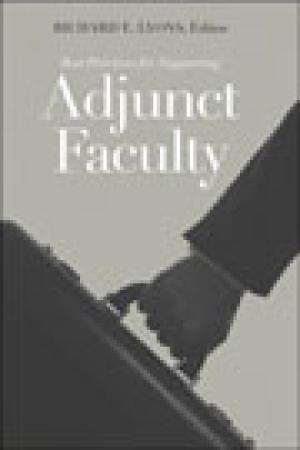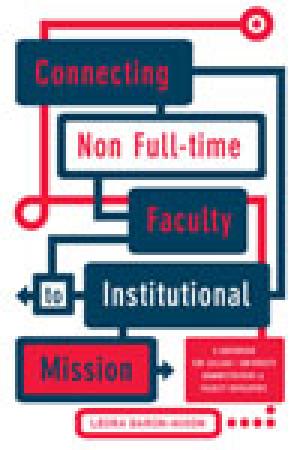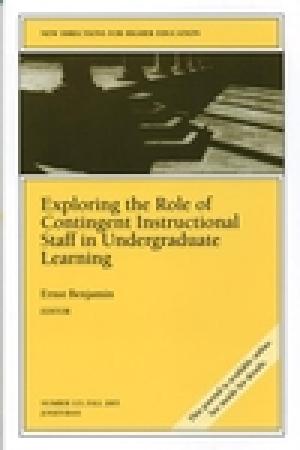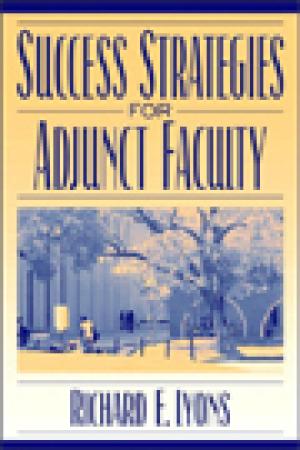Resources
Report by House Committee on Education and the Workforce Democratic Staff (Jan 2014). A Staff Report Summarizing eForum Responses on the Working Conditions of Contingent Faculty in Higher Education
June 2012 report by the Coalition on the Academic Workforce. A Portrait of Part-Time Faculty Members: A Summary of Findings on Part-Time Faculty Respondents to the Coalition on the Academic Workforce Survey of Contingent Faculty Members and Instructors. Not a representative sample but provides helpful data on adjunct conditions.
Documentary by Barbara Wolf. Looks at the working conditions of adjunct faculty in the U.S. Includes first-hand accounts from faculty and administrators.
PBS Newshour broadcast with Gwen Ifill. Discusses the increased use of part-time adjunct faculty in U.S. colleges and universities.
Chronicle of Higher Education article by Rebecca Schuman. Questions the notion of a teaching “calling” or “vocation.”
Provides an integrated package of 15 topical Webinars, an eNewsletter, printable and online resources, and the AS Cafe (live chat room), to help departments prepare and support their part-timers more effectively. Requires an institutional site license.

The number of part-time faculty members is increasing steadily, to the point that most colleges and universities could not function efficiently without them. The evening and weekend availability of adjunct faculty enables us to expand class schedules to serve the educational needs of nontraditional students, and their expertise offers students important real-world perspectives.Yet there is often a lack of preparation or support for their vital role. Best Practices for Supporting Adjunct Faculty is written for a full range of academic leaders, including instructional administrators, department chairs, and directors of teaching and learning centers. It showcases proven initiatives at a variety of institutional types—two- and four year, public and private—that help achieve the needs of adjunct instructors, while increasing their effectiveness within institutions’ existing delivery systems. This book provides research data on the initiatives highlighted, and valuable ideas for institutions expanding their professional development opportunities for part-time instructors—thus enhancing student learning and improving accountability outcomes. Contents include: * Deepening our understanding of adjunct faculty * Ensuring an effective start for adjunct faculty * Supporting adjunct faculty through face-to-face and online programming * Mentoring adjunct instructors in a variety of approaches * Building community and a sense of mission * Analysis of orientation, pre-service training, recognition, and comprehensive professional development programs for adjunct faculty * Portraits of proven programs and strategies for implementing initiatives atyour institution * An adjunct professor’s perspective on the benefits of supporting your part-timers’ teaching (From the Publisher)

Adjuncts have become the lifeline of a vast majority of colleges and universities. They teach many of the foundation and core courses taken by first and second year students, they teach professional courses in which their own life experiences are invaluable, and they step in on short notice to fill in for regular faculty engaged in research or away on sabbaticals. A survey of over 4,000 institutions conducted by the US Department of Education reveals that adjuncts are being hired at a much higher rate than full-time faculty. This is due partly to increased enrollment, partly to reduced budgets, partly as a deliberate administrative strategy, and partly to convenience. The importance of adjuncts to the college or university cannot be overstated. This book provides academic administrators and faculty developers with proactive, practical and results-producing approaches that can help transform fragmented faculties into inclusive and cohesive teaching and scholarly communities. Structured in an easy-to-follow, practical format, this book provides an invaluable resource of thoughtful and pragmatic approaches to ensure the both quality and satisfaction on the part of the institution and the adjuncts. Topics are presented in a thematic sequence that allows decision-makers to focus on their priority areas; guidance is provided for systematic planning and implementation. The contents focus on connecting adjunct faculty to core institutional functions and structures: Connection #1 - To The Institution; Connection #2 - To The Department; Connection #3 - To The Profession & The Discipline; Connection #4 - To Teaching; Connection #5 - To Students; Connection #6 - To Scholarship. (From the Publisher)

The majority of undergraduate instructors hold contingent appointments, a term used here to include not only the non-tenure-track part-time faculty but also many instructional staff who lack faculty status, an increasing proportion of full-time non-tenure track faculty, and a substantial number of graduate student teaching assistants. This volume seeks to foster a dialogue, long overdue, between those who believe that the academy has failed to give adequate respect and support to undergraduate instruction and those who believe that the academy has failed to give adequate support and respect to the selection and terms and conditions of employment of undergraduate instructors. It may be that the increasing dependence on contingent appointments imperils undergraduate learning no less than it imperils the future of the academic profession. (From the Publisher)

Success Strategies for Adjunct Faculty provides adjunct instructors with a multi-faceted toolkit for increasing both effectiveness and efficiency in today's college courses and enhances their opportunities for success. Building upon the research and strategies recommended in The Adjunct Professor's Guide to Success, Dr. Lyons leverages his subsequent workshop experiences throughout North America as well as focused research. The book adds new self-analysis tools that enable the instructor to integrate personal strengths into course planning and delivery, provides additional course management tools, such as a model mentoring agreement and an exam development exercise. Brand new features include testimonials from 28 successful adjunct professors throughout North America, which open and close each of the book's 14 chapters, as well as a new chapter focused on infusing technology into the adjunct professor's instruction. The book includes a rich array of online support resources. (From the Publisher)